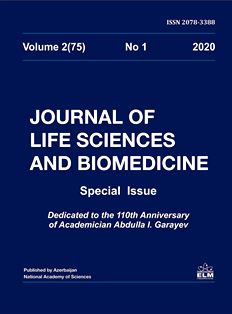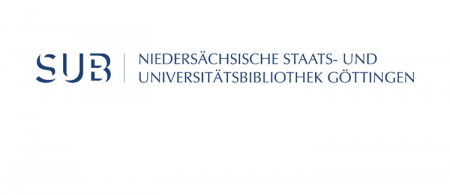
Development of genotyping panel for wheat using AmpliSeq technology
Research article: Development of genotyping panel for wheat using AmpliSeq technology
Author: M.A.Abbasov
Genetic Resources Institute, Azerbaijan National Academy of Sciences, Baku, Azerbaijan
Abstract: PCR-GBS or multiplexing amplicon sequencing is an alternative method for reducing genome complexity with the use of selective primers and is an indispensable tool for plant breeding and genome research. In the research work, for the first time, a PCR-genotyping panel comprising 830 primers spread across the wheat genome (A, B and D) was developed. After filtration, the newly created panel consisted of 401 high quality markers. Among the three wheat genomes, the B genome had the highest (151 single nucleo-tide polymorphism (SNPs)), and the D genome (88 SNPs) had the lowest marker density. Out of 21 chromosomes, 1B and 3B were characterized with the highest, and chromosomes 3D and 4D with the least SNPs. The frequency of transition-type SNPs (84%) was significantly higher than transversion-type SNP markers (16%), with Ts/Tv ratio equal to 5.3. The reliability of the new genotyping panel was tested in the bread wheat (T. aestivum L.) collection. The genetic diversity coefficient and polymorphism infor-mation content for 69 bread wheat accessions were 0.252 and 0.205, respectively. The highest polymor-phism was observed for var. ferrugineum və var. milturum, and the least variation was for var. hostianum. Using the PCoA analysis, 22.5% of the variations of the first three coordinates were elucidated. Thus, SNP markers included in the genotyping panel allowed identifying genotypes with unique profiles, as well as to generate a general picture of genetic diversity in the whole collection.
Keywords: Bread wheat genome, PCR-GBS, amplicon sequencing, multiplexing, SNP, transition, transversion
References
Appels R., Eversole K., Feuillet C., Keller B., Rogers J., Stein N., Pozniak C.J., Choulet F., Distelfeld A., Poland J., Ronen G. (2018) Shif-ting the limits in wheat research and breeding using a fully annotated reference genome. Scien-ce, 361: p. eaar7191.
Balfourier F., Bouchet S., Robert S., De Olivei-ra R., Rimbert H., Kitt J., Choulet F., Paux E. (2019) International Wheat Genome Sequencing Consortium and BreedWheat Consortium. Worldwide phylogeography and history of whe-at genetic diversity. Science Advances, 5(5): p. eaav0536.
Berkman P.J., Visendi P., Lee H.C., Stiller J., Manoli S., Lorenc M.T., et al. (2013) Dispersi-on and domestication shaped the genome of bre-ad wheat. Plant Biotechnol. J., 11: 564–571.
Bradbury P.J., Zhang Z., Kroon D.E., Casste-vens T.M., Ramdoss Y., Buckler E.S. (2007) TASSEL: software for association mapping of complex traits in diverse sam-ples. Bioinformatics, 23(19): 2633-2635.
Dvorak J., Akhunov E.D., Akhunov A.R., Deal K.R., Luo M.C. (2006) Molecular characteriza-tion of a diagnostic DNA marker for domestica-ted tetraploid wheat provides evidence for gene flow from wild tetraploid wheat to hexaploid wheat. Mol. Biol. Evol., 23: 1386–1396.
Edae E.A., Bowden R.L., Poland J. (2015) App-lication of Population Sequencing (POPSEQ) for Ordering and Imputing Genotyping-by-Se-quencing Markers in Hexaploid Wheat. G3, 5(12): 2547–2553.
Gao L., Fang Z., Zhou J., Li L., Lu L., Li L., Li T., Chen L., Zhang W., Zhai W., Peng H. (2018) Transcriptional insights into the pyrami-ded resistance to rice bacterial blight. Scientific reports, 8: 5-11.
Jamann T.M., Sood S., Wisser R.J., Holland J.B. (2017) High-throughput resequencing of maize landraces at genomic regions associated with flowering time. PloS ONE, 12(1): p.e0168910.
Lynch J.P. (2007) Roots of the second green re-volution. Australian Journal of Botany, 55: 493-512.
Ogiso-Tanaka E., Shimizu T., Hajika M., Kaga A., Ishimoto M. (2019) Highly multiplexed ampliseq technology identifies novel variation of flowering time-related genes in soybean (Glycine max). DNA Research, 26(3): 243-260.
Perrier X., Jacquemoud-Collet J.P. (2006) DARwin software http://darwin.cirad.fr/darwin
Ray D.K., Mueller N.D., West P.C., Foley J.A. (2013) Yield trends are insufficient to double global crop production by 2050. PLoS ONE, 8: e66428.
Schnable Lab [Internet]. Genotyping by multip-lexing amplicon sequencing (GBMAS); c2001-2015 [updated 2015 Jul 6; cited 2015 Jul 29]. Available: http://schnablelab.plantgenomics. iastate.edu/resources/protocols/. Accessed 29 Jul 2015.
Tanaka T., Ishikawa G., Ogiso-Tanaka E., Ya-nagisawa K., Sato K. (2019) Development of genome-wide SNP markers for barley via refe-rence-based RNA-Seq analysis. Frontiers in Plant Science, 10: Article No 577, 9 pages.























